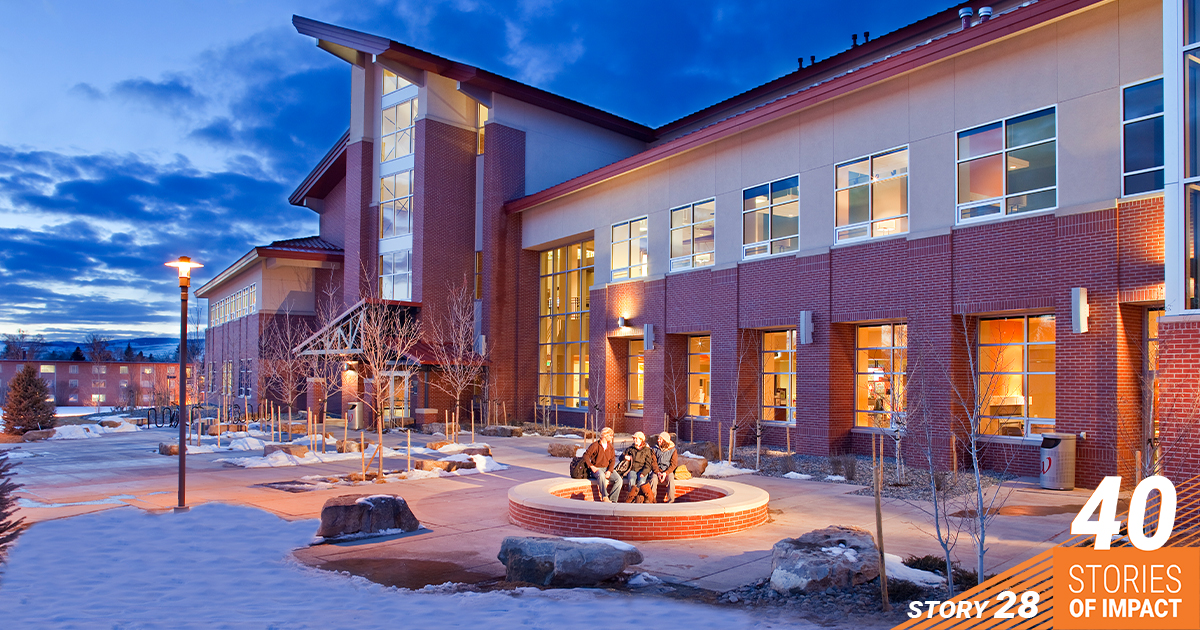Market

Institutions of higher education throughout time are representative as places where boundaries can be pushed, innovation is born, and students are challenged to grow and reach a better future for themselves and their communities. Those missions don’t end at curriculum, the professors hired, or the partnerships formed, but extend to the campus’ physical landscape which often serves as a reflection of the type of culture and impact those institutions have on our society.
INCORPORATING SUSTAINABILITY
Sustainable building standards were just emerging in our industry when the USGBC was formed in 1993, and it wasn’t too long after that many Higher Education Institutions also adopted those advancements. State-funded projects under the State Architect made sustainable standards a requirement for all publicly funded projects, many of which were in higher education. This decision to take a stand for sustainable design and construction in the spaces that form and influence the next generation also helped encourage our industry to view sustainable vision and priorities as desirable and non-negotiable when designing and building. Over the years, this movement has permeated into establishing globally accepted and more sustainable building codes and standards.
A GROWING COMPANY EMBRACING COMPLEXITY
Part of Ray Nunn’s vision for Nunn Construction when it was founded was to be a “sophisticated” company – capable of completing complex buildings and embracing innovative building practices. After being in business for 17 years, Nunn Construction stepped into the higher education market and was selected to add an addition to Pikes Peak State College’s Centennial Campus and, a few years later, renovate Dwire Hall for the University of Colorado Colorado Springs (UCCS).
Ray Nunn recalled, “Being able to start working in Higher Education, for me, meant that as a company we had achieved a new level of expertise needed to perform on these very complex projects – and in dynamic, occupied campuses.” A few years later, Western Colorado University (Western State University at the time) selected Nunn Construction to work with Hord Coplan Macht (HCM) on a new College Union which launched multiple projects with WCU and the start of a long-standing partnership with HCM.
The projects for WCU in Gunnison represented a “first” for Nunn Construction: our first projects located far outside of the Pikes Peak Region. Ray remembers more than a few restless nights worrying about the added complexity of our team building in a location farther away from home – as if his kids were leaving the nest for the first time. However, he added with a laugh, the winters did add a side benefit of closer skiing over weekend breaks.
TRYING NEW DELIVERY METHODS
In 2015, The State Architect adopted the Design/Build delivery method as a potential contract option and UCCS jumped on the opportunity to capitalize on the delivery’s additional collaborative benefits in quickly balancing design and cost. Nunn worked with HCM to complete the first Design/Build State-funded Higher Education project in the state of Colorado with the Academic Office Building.
EXPANDING OPPORTUNITIES IN HIGHER EDUCATION
After those first few early projects with Pikes Peak State College, Western Colorado University and UCCS, we have since been proud to work with many other higher education institutions such as Colorado State University-Pueblo, Fort Lewis College, Trinidad State College, Denver Seminary, Colorado Technical University, and Colorado College. All our projects in the higher education sector have not only sought to push the boundaries past basic improvements or buildings but also make the most of state funds, endowments, or donations and bring innovative, creative and forward-thinking spaces for students and staff to work, live and play in.
As a general contractor, we count ourselves privileged when tasked with the opportunity to build spaces for higher education. Time after time, these projects also stretch us in developing our tools, processes and improving the way we build. Whether it’s cutting-edge sustainable systems, recycled materials, complex logistics, or collaborative spaces to connect, educate and engage with our community – each time we get to build for higher education, we’re also grateful to have grown as a company and a team.

